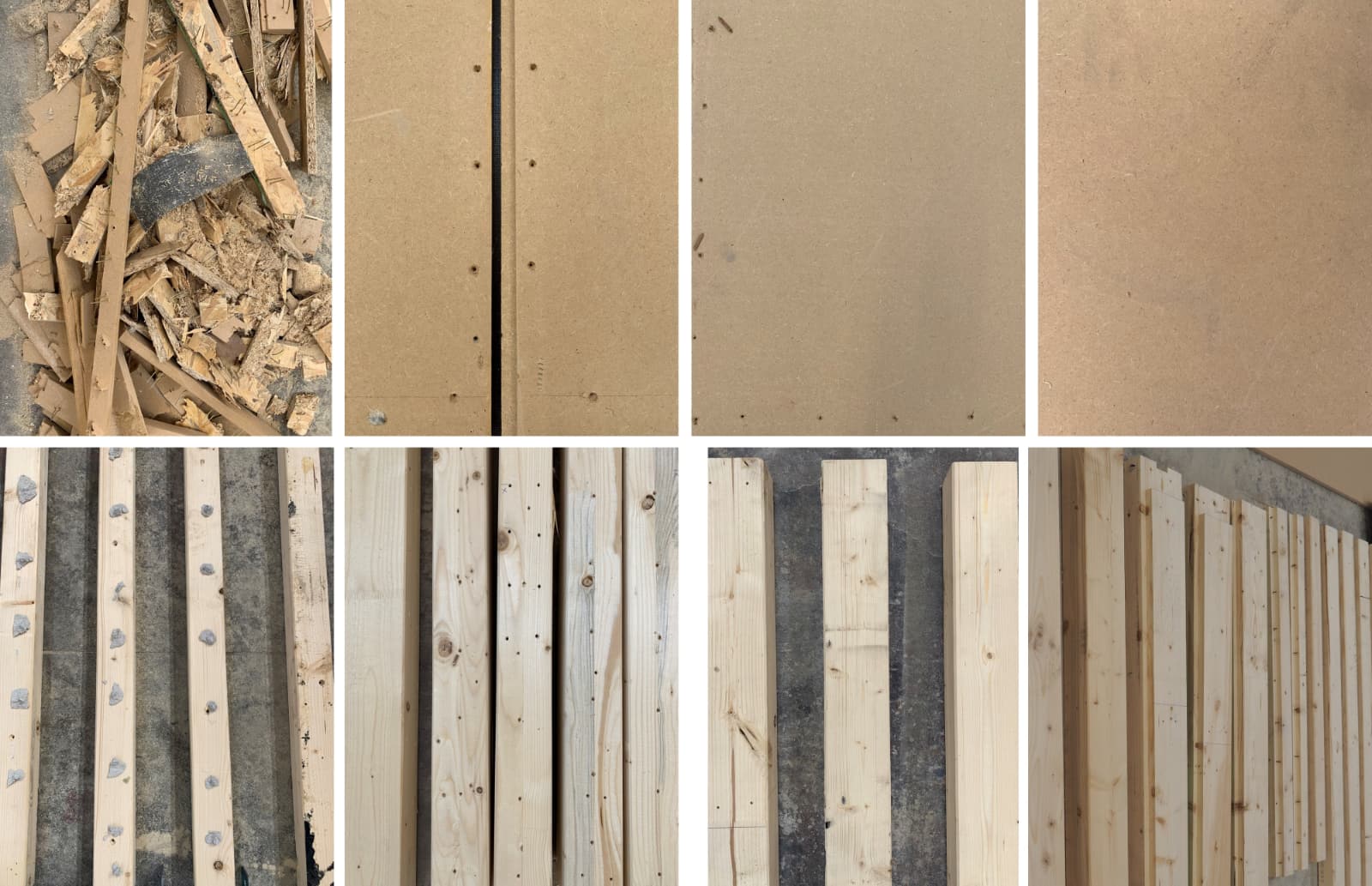Downloads
DOI:
https://doi.org/10.47982/jfde.2022.powerskin.5Keywords:
extraordinary maintenance, disassembly, End of Life, Climate Change Potential, Wood constructionAbstract
Timber-based façade technologies have the potential to effectively reduce the carbon footprint, reduce water use in construction, and minimize waste, when their manufacturing process is highly prefabricated. Additionally, avoiding glue parts can enhance the sustainability of the façade as its elements can be replaced (extending the durability of façades and therefore buildings) and separated once that they reach their end of life (to re-use or recycle them). Thus, the connection between materials might have a considerable impact on the façade’s sustainability. Moreover, timber-based façades can have different claddings, impacting on the water needed for the technology and their Global Warming Potential (GWP). This paper assesses, through a novel methodological approach, materials’ reusability, water use, and GWP for different façade connections and claddings. Four prototypes with different connections (staples, screws, timber nails, and geometrical assembly) were built. Experimental activities representing façade elements’ substitution and disassembly provided qualitative and quantitative information about production, extraordinary maintenance, and end-of-life phases. Through these tests, the quantity of material that could be re-used and disposed in such phases was quantified and then inserted in a Life Cycle Analysis (LCA). LCA was conducted using EF v.3.0 impact method and components were modelled with EPD information and Ecoinvent cut-off 3.7 database. According to the results, a timber-based façade with timber nails and wood cladding is the most promising of reusable façade materials, decreasing the water use and GWP.
How to Cite
Published
Issue
Section
License
Copyright (c) 2022 Miren Juaristi, Ilaria Sebastiani, Stefano Avesani

This work is licensed under a Creative Commons Attribution 4.0 International License.
Authors or their institutions retain copyright to their publications without restrictions.
References
Circle Economy. (2022). The Circularity Gap Report 2022. https://www.circularity-gap.world/2022#Download-the-report
Cruz Rios, F., Grau, D., & Chong, W. K. (2019). Reusing exterior wall framing systems: A cradle-to-cradle comparative life cycle assessment. Waste Management, 94, 120–135. https://doi.org/https://doi.org/10.1016/j.wasman.2019.05.040
Deniz, O. S., & Dogan, E. (2014). Building Façade System for Deconstruction. Journal of Sustainable Architecture and Civil Engineering, 8(3). https://doi.org/10.5755/j01.sace.8.3.7231
Gubert, M., Toniato, G., Papaiz, L., & Avesani, S. (2021, September 22). End of Life tool for building product development: the Solar Window Block case study. XV Convegno Della Rete Italiana Di LCA 2021.
Heesbeen, C., Zabek, M., & Hildebrand, L. (2021). A Definition of Essential Characteristics for a Method to Measure Circularity Potential in Architectural Design. In T. Auer, U. Knaack, & J. Schneider (Eds.), Powerskin Conference Proceedings (pp. 165–174). TU Delft open Journals.
Hildebrand, L. (2014). Strategic investment of embodied energy during the architectural planning process. Delft University of Technology, Faculty of Architecture and the Built Environment,.
Juaristi, M., Favoino, F., Gómez-Acebo, T., & Monge-Barrio, A. (2022). Adaptive opaque façades and their potential to reduce thermal energy use in residential buildings: A simulation-based evaluation. Journal of Building Physics, 45(5), 675–720. https://doi.org/10.1177/17442591211045418
Nutzungsdauern von Bauteilen für Lebenszyklusanalysen nach Bewertungssystem Nachhaltiges Bauen (BNB). (n.d.). Retrieved May 19, 2022, from https://www.nachhaltigesbauen.de/austausch/nutzungsdauern-von-bauteilen/
Pittau, F., Amato, C., Cuffari, S., Iannaccone, G., & Malighetti, L. E. (2019). Environmental consequences of refurbishment vs. demolition and reconstruction: A comparative life cycle assessment of an Italian case study. IOP Conference Series: Earth and Environmental Science, 296(1). https://doi.org/10.1088/1755-1315/296/1/012037
